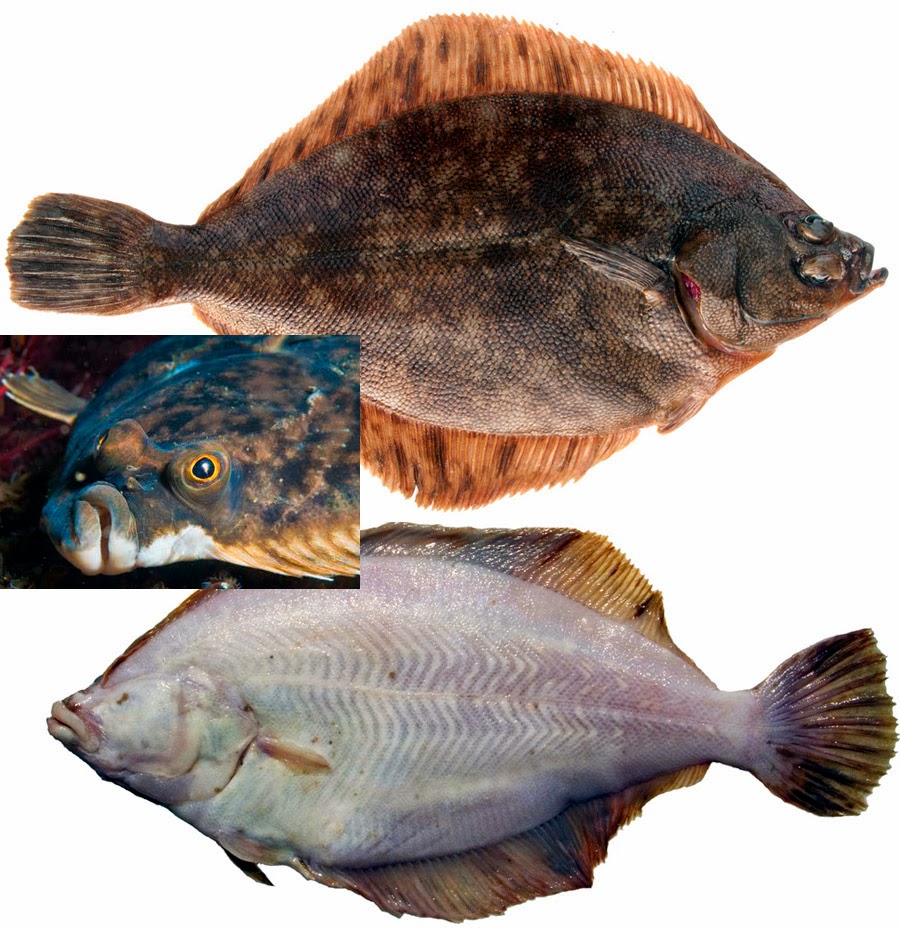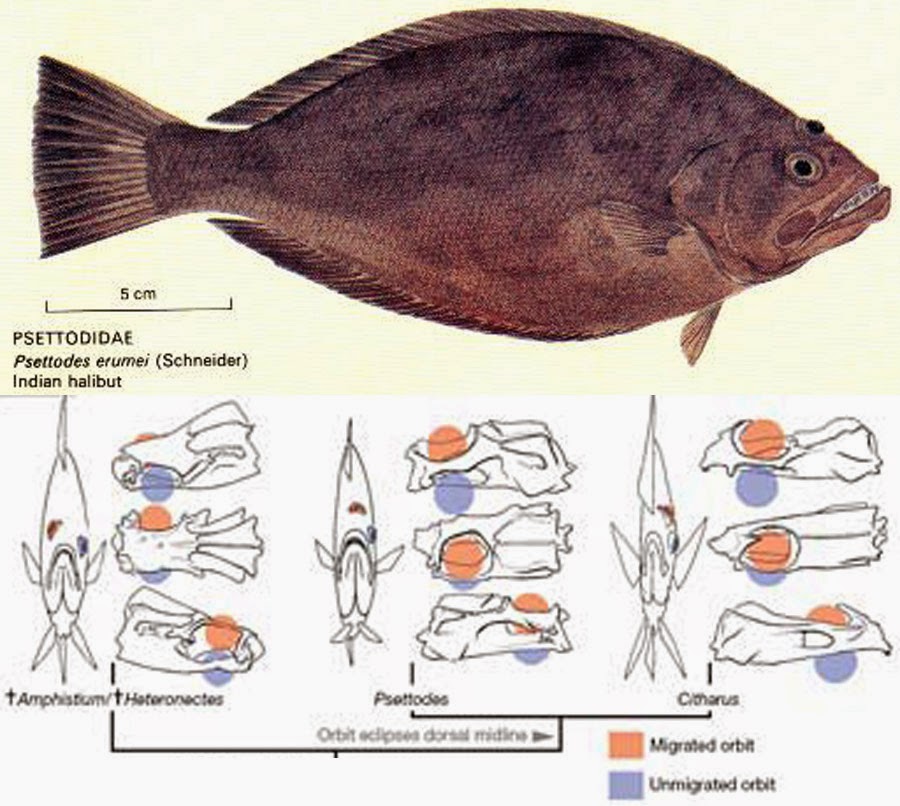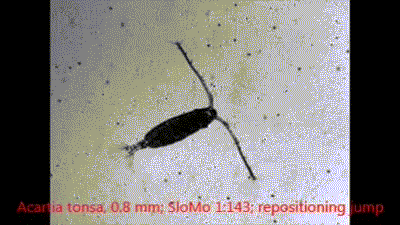Biology concepts – asymmetry, lateral polymorphism, flatfish, evolution, copepod, ecology, niche
MacDonald P (2013). A rare occurrence of reversal in the common megrim Lepidorhombus whiffiagonis (Pleuronectiformes: Scophthalmidae) in the northern North Sea. Journal of fish biology, 83 (3), 691-4 PMID: 23991885
Suzuki, T., Washio, Y., Aritaki, M., Fujinami, Y., Shimizu, D., Uji, S., & Hashimoto, H. (2009). Metamorphic pitx2 expression in the left habenula correlated with lateralization of eye-sidedness in flounder Development, Growth & Differentiation, 51 (9), 797-808 DOI: 10.1111/j.1440-169X.2009.01139.x
Goto T (2009). Reversals in two dextral flounder species, Microstomus achne and Cleisthenes pinetorum (Pleuronectida; Teleostei), from Japan. Journal of fish biology, 74 (3), 669-73 PMID: 20735586
BERGSTROM, C. (2007). Morphological evidence of correlational selection and ecological segregation between dextral and sinistral forms in a polymorphic flatfish, Platichthys stellatus Journal of Evolutionary Biology, 20 (3), 1104-1114 DOI: 10.1111/j.1420-9101.2006.01290.x
Friedman, M. (2008). The evolutionary origin of flatfish asymmetry Nature, 454 (7201), 209-212 DOI: 10.1038/nature07108
Predators need to catch their food, so they need depth perception. For this you need two overlapping images. You don’t do the math consciously, but your brain uses the differences in each image to tell you how far away the target prey is. To get two images simultaneously, you need both eyes to be on the front of your face.
Prey animals, usually herbivores, have to worry about being chased down by a predator. Prey animals are usually quick, but they need clues to get a good start before the predator gets too close. Their eyes are designed to pick up motion; it doesn’t matter how far away it is. If something moves in their line of sight, they assume it’s a predator and they bolt. By having their eyes on the sides of their head, they have a maximal range of vision which gives them the best chance to see that lioness coming.
Just to show you how important evolution thinks it is to have at least two eyes, let’s discuss a group of animals that have found a way to make two drastic changes work for them. Flatfishhave evolved to lie on their side, but they’re predators so they can’t afford to have one eye constantly seeing nothing but the sandy ocean bottom. Consequently, they have moved one eye to the other side of their head!
All the Pleuronectifromesstart out as fry that swim upright. Their top is at the top, and the bottom is toward the bottom. They live nearer the top of the water than the bottom, have pigment coloration on both sides of their body, and feed on phyto- and zooplankton. But the surface isn’t the safest place to live; bigger fish are always around to eat the small fry.
So, as they start to develop into adults, many changes take place. They swim down to the floor of whatever body of water they call home. One eye starts to move! It travels over the top of their head and onto the other side, like the Mr. Potato Head of some deranged child.
As you can imagine, moving an eye isn’t an easy thing to do. Their brain has to move, as do the cranial and facial bones. Their mouth has to make room for the eye coming its way. All in all, it’s a tough piece of work.
Well, there are evolutionary intermediates – even some living examples. A paper in 2008 introduced us to two extinct species of flatfish. In each (Amphisitium and Heteronectes), one eye had migrated, making the fish asymmetric, but it had not crossed the crown of the skull and made it to the other side. These are definitely intermediate species, but we can go one better.
The Psettodesgenus of flatfish (the turbots - yummy by the way) have one eye that is located right at the crown of their skull. Perhaps technically you could say that is has migrated to the other side, but just barely. And this brings us to another question, which eye moves?
Some flatfish are right-eyed (dextral) that swim left side down. Others are left-eyed (sinistral) and swim with their right side down. Some species are strict and some are more likely to have reversants (individuals that lay on their other side). A 2005 paper stated that only about 7 of the 700 species of flatfish show lateral polymorphism (lateral = side, poly = more than one, and morph = shape), ie. some right-eyed and some left-eyed individuals.
a 2009 paper describes reversants for two right-eyed flounder species which are the first left-eyed individuals ever seen in these two species (Microstomus achne and Cleisthenes pinetorum). It goes the other way too – a 2013 study describes the first right-eyed individual ever seen in a megrim (sometimes called a whiff, Lepidorhombus whiffiagonis). But in the left-eyed California halibut (Paralicythys californicus), up to 40% of the individuals are right-eyed. Perhaps right-eyed species are stricter than left-eyed species.
The exception to that rule is the starry flounder (Platichthys stellatus). It’s a member of a right-eyed family of flounders, but in some cases half of the individuals are left-eyed. In this case, there seems to be more to the story - the lateral polymorphism occurs only in populations of specific geographic areas.
A paper from 2007 looked into the mystery that 7 species that show lateral polymorphism, but only two (starry flounder and P. fleusus) show a geographical distribution in their polymorphs. Off the coasts of Japan and Russian, 100% of the starry flounders are left-eyed, but near Alaska they are only 75% sinistral and from Washington state to central California the populations are about 50/50.
The researchers looked into several questions. Was there more to being left-eyed or right eyed than just which side the eye went to? Does the side make a difference that could account for the geographic distribution? They found out – yes, and yes.
They saw that the right and left-eyed individuals have more asymmetries between them than just the side of the body that the eye migrates to. They have differences in mouth size and angle, as well as tail size of all things. Right-eyed individuals had significantly longer and wider tails than did left-eyed individuals!
The research also shows that in areas where the two groups compete the most, the differences between the dextral and sinistral individuals are the greatest. This suggested to them that the differences allow them to compete for different prey – to fill different ecological niches. The hypothesis is that the polymorphic asymmetries give them different advantages which they then exploit and this is why there is a stable geographic distribution in populations.
A 2009 paper started to investigate this. During development of the embryo, certain internal asymmetries develop (will talk more about this in a few weeks). In fish and other vertebrates, this is controlled by expression of certain genes in the habenulaof the brain. One of the gene products (proteins) in the habenula is called pitx2.
There are actually two habenulae, one in each hemisphere of the brain, as part of the thalamus. The researchers looked at the brains of right-eyed and left-eyed flounder species and detected some things that were the same and some things that were different.
After the pitx2 did its job in the embryo, it was turned off. But right before metamorphosis – when the eye migrates and the fish lies down on one side, pitx2 was turned back on – only in the left habenula, regardless of which way the fish’s eye was going to migrate and which way it was going to lie down.
Not only that, but the right habenula started to grow bigger than the left habenula in both dextral and sinistral species. The only thing that was different was the rotation of the brain, with the left habenula moving forward in the right-eyed species and the opposite occurring in the left-eyed species. The same changes occurred in fish no matter which eye migrated!
By the way – at the beginning of today’s post I asked if there were any real animals with one eye. I made it sound like there aren’t but in fact there are exceptions. In some small crustaceans (arthropods) called copepods, the majority of species have a single eye right in the middle of their head! What’s more, a 1994 study showed that the holdfast of a particular copepod parasite is asymmetric (like we saw last week) and this particular copepod is a parasite of only flatfishes! How symmetric this tale of asymmetry turned out to be!
Next week - can a single tooth render an animal asymmetric? Well, that depends on the tooth, doesn't it.
Next week - can a single tooth render an animal asymmetric? Well, that depends on the tooth, doesn't it.
For more information or classroom activities, see:
Flatfish –
Copepods –
Habenula -





